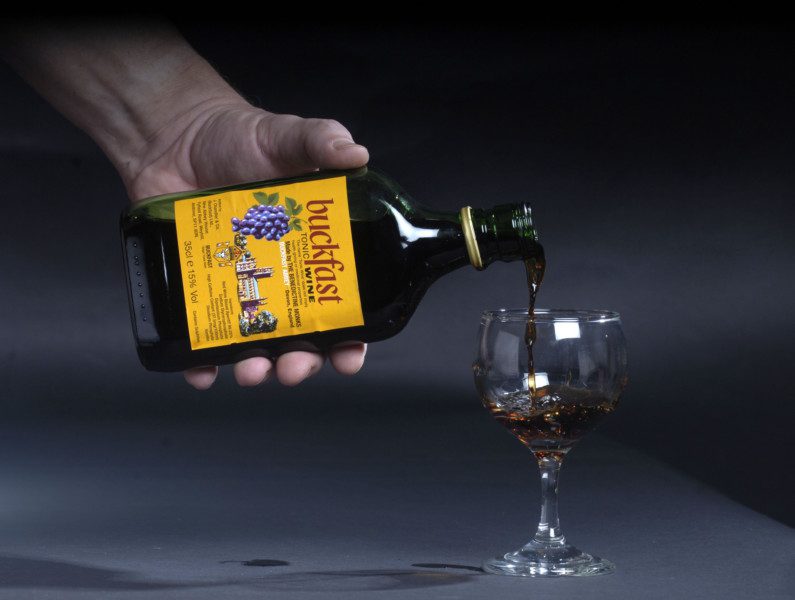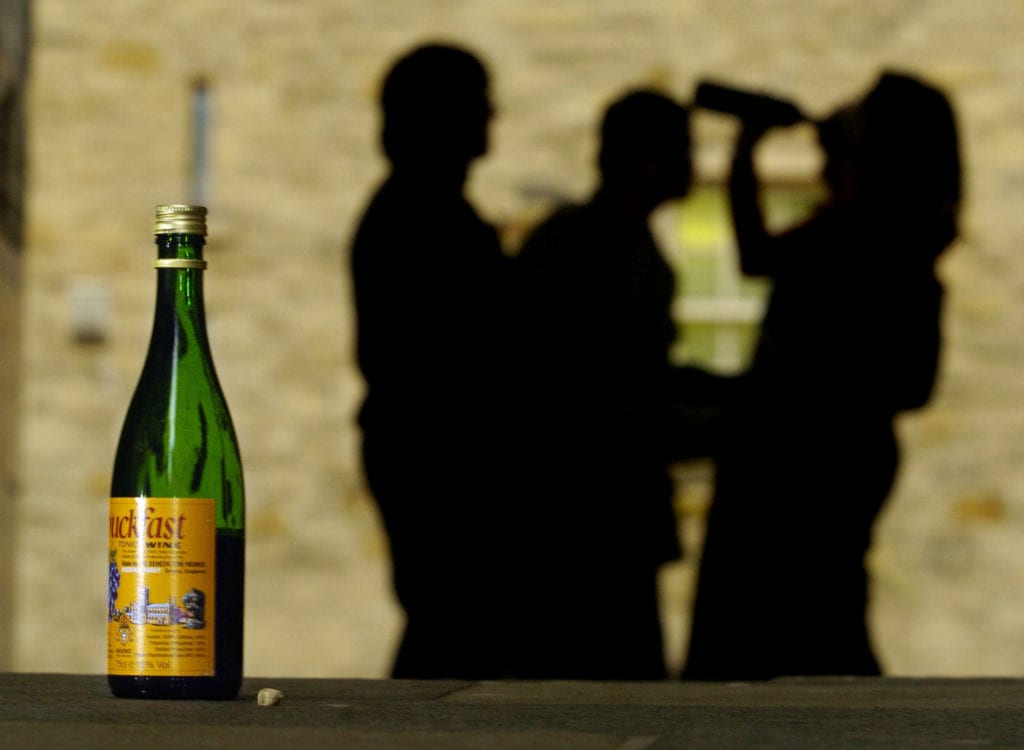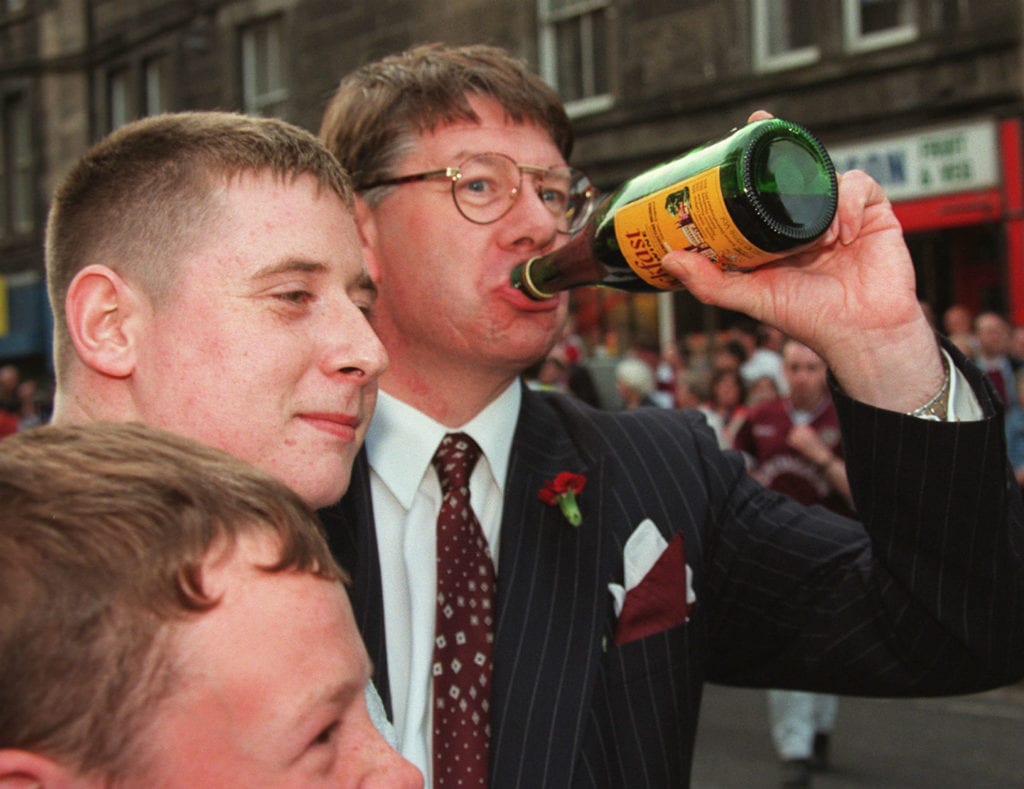Though made in southern England, Buckfast's most popular markets are undoubtedly Scotland and Ireland.
First created by a religious order in an Abbey in Devon, the drink has gone to become huge business, returning J Chandler & Co, the company that distributes it, £4.3m in pre-tax profits for 2017.
The original recipe for the tonic wine was, according to the brand's website, attributed to French monks who settled at the Abbey in Devon in the late 1800s.
Using imported mistellas from Spain, the monks would then add their own ingredients to create the tonic version of the wine.
Buckfast, in its modern form, began to take shape in the 1920s when the distribution of the bottles was given over to a wine merchant, who, to increase the appeal, advised "enhancing" the formula to create a smoother flavoured medicated wine.

Picture: TSPL
Already selling around 1,400 bottles a year by then, this decision led to its popularity exploding as it was marketed as a liquor which would 'help you cope with life's little ups and downs'.
Fast forward to modern times and Buckfast has once again been rebranded, this time in areas that were a million miles from the pristine grounds of the Abbey that conceived it and a world away from the monastic lifestyles of its creators.
Now well known in some of the most deprived areas of Scotland, where its popularity has surged, as "wreck the hoose juice" and "commotion lotion", or more commonly in its simple shortened form "Buckie", the fortified wine has become endemically entwined with the problems the country has with alcoholism and is never far from newspaper headlines or news presenters' topics of discussion.
So how did it come to be so popular in Scotland, and in particular, the areas in Glasgow dubbed the Buckfast Triangle (Airdrie, Coatbridge and Bellshill)?
One theory, posted in a Guardian article, is that Buckfast was first popularised in these areas of Glasgow by Celtic fans in the 70s due to its "similarity to communion wine" with both being made from mistella - unfermented or partially fermented grape juice fortified with ethanol.
Whatever the reasons, the drink has gone on to be described as an 'orbital news item' - meaning that it comes around every year or so - with it courting controversy for decades north of the border, a point of criticism that its producers remain steadfast in the face of.
Linked heavily with anti-social behaviour, a news report by the BBC in 2010 ran with a headline that stated that, though it was responsible for less than 1 per cent of Scotland's total alcohol sales, mention of Buckfast had appeared in "5,638 crime reports in Strathclyde from 2006-2009" which equated to "three a day on average".
Former First Minister Jack McConnell described the brand on BBC Scotland's The Politics Show as "a badge of pride amongst those who are involved in antisocial behaviour".

Picture: TSPL
At the time, when asked whether the figures meant that the fortified wine could be said to be associated with violence, Strathclyde Police superintendent Bob Hamilton said: "I think it's clear from the figures that there is an association there."
Perhaps the most damning aspect of the report was that during the same period, Buckfast bottles were used as weapons 114 times.
Indeed, in 2014, it was announced that the drink would be available to buy in cans, in a bid, it was hoped, to reduce the chronic level of bottle attacks and injuries in Scotland.
Under pressure by the Scottish government and health campaigners to produce the drink in plastic bottles or other alternative packaging and reduce the volume J Chandler & Co, the distributors of the tonic wine in Scotland, relented and created the canned version of the drink, which the first run of 16,000 went on to sell out in its entirety in the first month of being on sale.
Many politicians have pointed to the incendiary drink's composition as the reason for its notoriety and popularity with young delinquents, though only containing 15 per cent alcohol, Neuroscientist Dr Steven Alexander told the BBC that there was as much caffeine in a 750ml bottle of Buckfast as there was in around eight cans of cola, with each bottle also containing around 9 grams of sugar.
When asked about reducing Buckfast's caffeine content, Jim Wilson, from JC Chandler said: "It's been there for over 80 years. Why should we go about changing the recipe of something just to satisfy somebody's whim?"

Former Edinburgh Lord Provost Eric Milligan enjoys a wee sip of Buckfast wine with Hearts fans after their team beat Rangers 2-1 to win the Scottish Cup 1998. Picture: TSPL
In 2011, a new winery was completed at the abbey, and as profits continued to soar, calls were made by other religious movements to have the English monks stripped of their charitable status - the Abbey Trust does not pay tax on its income - with a spokesperson for campaign group the National Secular Society stating: "The monks should be setting an example as a religious organisation but the opposite is happening.
“The question needs to be asked ‘Are they serving God or Mamon?'”
The monks, and by extension distributors J Chandler & Co, have always defended their product, with spokesperson Anthony Joyce writing in a letter to a national newspaper wrote: "Our company decided several years ago that Buckfast would not be advertised or promoted in Scotland.
"Instead our total effort in Scotland has gone into supporting police and community groups in combating alcohol abuse, including advising independent retailers on the social dangers of price-cutting and under-age sales."
The notorious drink's popularity remains as strong as ever in Scotland and Northern Ireland with everything from Easter eggs and sausages to steak pie and sweets being made using it.

Picture: TSPL
In 2015, the first ever National Buckfast Day was launched before becoming "World Buckfast Day" in 2016, which also took place last year.
Fan website "Wreck the Hoose Juice" have even launched an app which helps users pinpoint the location of their nearest Buckfast supplier and topped the Android and Itunes app stores charts in July last year.
While singer Ed Sheeran confessed to getting drunk on Buckfast while on a Scottish night out, the drink (or something that looks suspiciously like it) has even appeared on the Simpsons.
Of late, the drink has even become glorified by the Hipster movement which has seen it used in art installations and added to cocktails and other mixed drinks.
A recent report by the Telegraph has also revealed that demand for the tonic wine is also now growing in Southern England with sales growing by nearly 8 per cent in the past year, meaning that it's unlikely to disappear from our shops, or the news headlines any time soon.
